Wait, Don’t Throw That Out! The Beneficial Reuse of Soils Just May Be A Better Way To Go
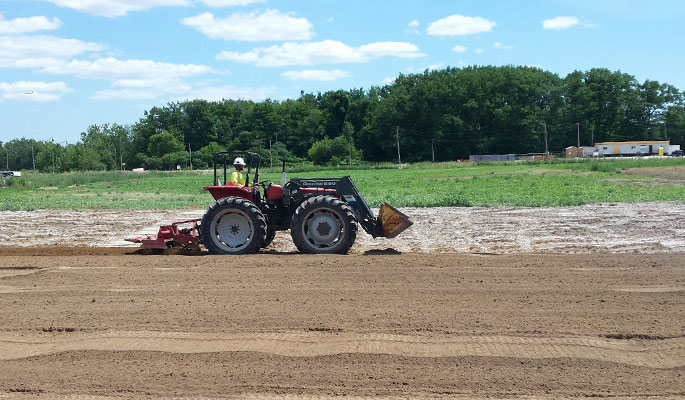
When contaminated soils are an obstacle to a property transaction or redevelopment, the fastest approach is usually to dig out the soil and then haul it away.
But that last step might be rash – and costly. And it unnecessarily uses up valuable landfill space!
There are many scenarios where on-site treatment will be preferred. The types of impacts that can effectively be managed this way may surprise you.
For example, many environmental practitioners may not consider treating soils contaminated with pesticides or heavy metals. Ditto for soils heavily impacted with heating oil.
Recently, we tested, implemented, and achieved clean‑up goals on soils representing all 3 of these scenarios using ex-situ remediation.
A major factor in the success of treating soils is the validation and optimization of the approach with small scale trials. Lessons learned are then applied for full‑scale implementation.
Additional Reading from the Vertex Vault:
The Value of Bench Scale Testing
Below is a brief summary of 3 recent projects where we experienced a high level of success treating soils that otherwise would require off-site disposal with a hefty price tag.
Site # 1 – Apple Orchard Pesticides
A 25 hectare (65 acre) site in Brampton was the location of a former apple orchard. Historic application of insecticide led to an accumulation of DDE in surface soils. Contaminants were 5 to 10 times above the acceptable standards for a residential development.
As generally expected at agricultural sites impacted by pesticide applications, only the surface soils (approximately 0.6 m deep) were contaminated.
A straight forward remediation approach would have been to scrape off the top layer of topsoil and send it off-site to a landfill for disposal. However, we were able to successfully remediate these soils on-site, saving millions of dollars in disposal costs!
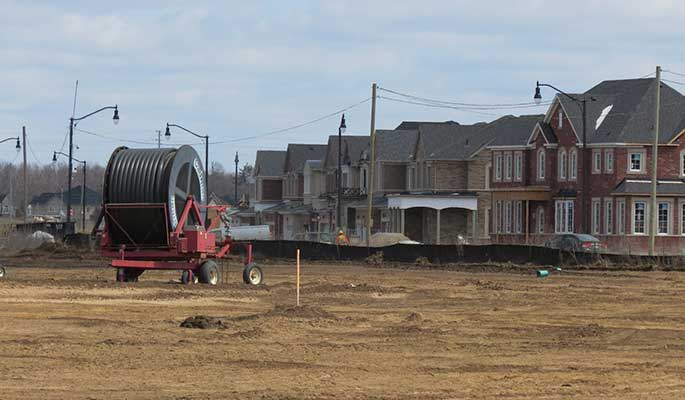
To evaluate on-site treatment as an alternative to digging and off-site disposal, soil samples were collected and incubated with remedial amendments at the bench-scale. The amendments selected were designed to encourage cycles of anaerobic and aerobic biodegradation of the DDE. These cyclical processes are known to dechlorinate and degrade pesticides in a step-by-step fashion.
Once the proper dosing and cycling parameters were established at bench-scale, field scale trials and full scale applications of the amendments followed.
Residential construction is currently proceeding on the site in phases. To date, the soil treatment has been very successful at reducing pesticide residuals to below site standards at over half of the site area. Typical degradation timelines are illustrated in the graph below.
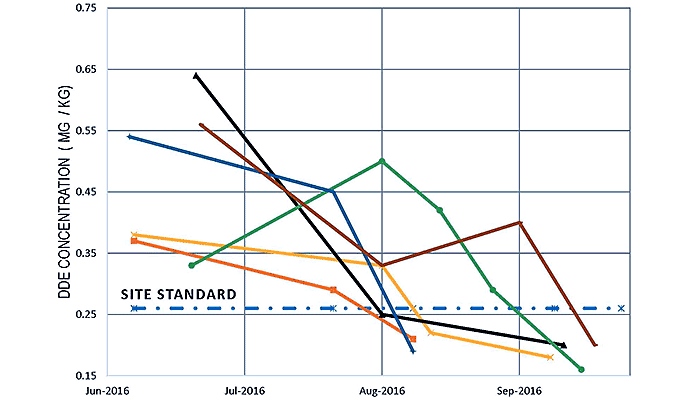
Importantly, the soil remediation has kept ahead of the construction schedule. No construction delays have occurred due to the contaminated soils. The process has also offered tremendous value to the client. The costs for on-site soil treatment were determined to be approximately one third of the cost of off-site soil disposal.
Site # 2 – Firing Range Lead Shot
We also recently completed bench and pilot scale testing to manage lead shot that had accumulated in a soil berm at a historic firing range. Soils were classified as hazardous based on TCLP leachate testing. Preliminary testing by others had indicated the soils could be rendered non-hazardous via the application of lime to stabilize the lead, thus preventing it from leaching.
We tested the lime approach in the lab but, based on our own research, we also decided to test various forms of phosphates and modified a number of other soil chemistry variables.
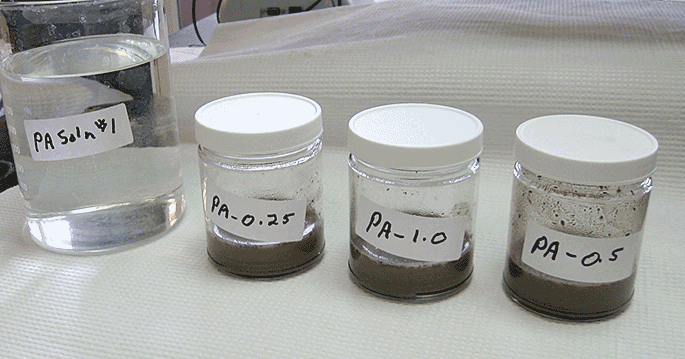
The lab trials grew into pilot-scale testing in the field on a total of nine 4 m3 stockpiles. Various formulations and mixing techniques were assessed. The trials indicated that lime, even at doses as high as 20% by weight, was in fact not effective at stabilizing lead in these soils. On the other hand, phosphates applied at doses as low as 1 to 2% were proven in both lab and field trials to be highly effective at reducing leachable lead concentrations. The soils were converted from a hazardous to non-hazardous was classification.
The bulk lead remains as a contaminant source in the soils, with the result that off-site disposal remains the likely ultimate fate for these soils. However, the re‑classification of the soils to non-hazardous as a result of the on-site treatment translates into savings of several hundred dollars per tonne for the client.
Site # 3 – Manufacturing Facility with Gross Soil Impacts From Heating Oil
Vertex was part of the team at the recently completed, high profile, Greenwich-Mohawk Brownfield Project for the City of Brantford.
In 2014 Vertex supported pilot-scale trials to assess biological treatment, screening, and washing of soils heavily impacted with F2 and F3 fractions of petroleum hydrocarbons. Lessons from these trials informed the full-scale design of these operations.
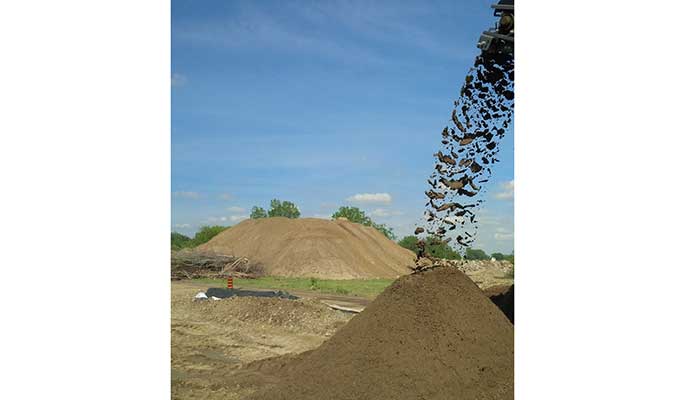
The full scale remediation was initiated in 2015. By the next year, a total of 148,900 cubic metres of contaminated soil had been excavated. Through segregation, screening, soil washing, and biopiling, fully 73% of the heavily contaminated soil was treated on site and reused.
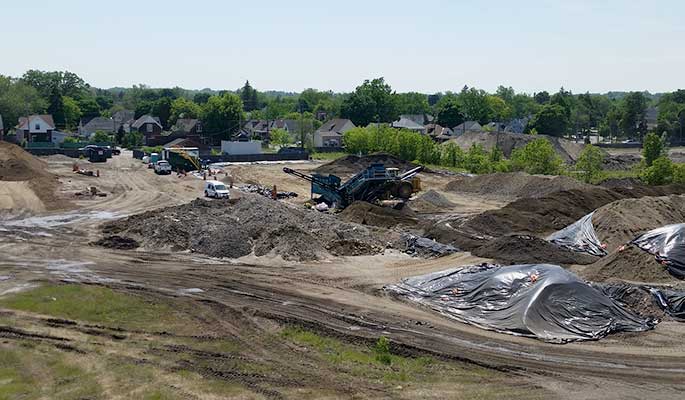
Conclusions
Although off-site soil disposal effectively removes the problem, there’s often a better way, and perhaps a more sustainable way. In addition to the tipping fees, there are often extra costs to import fill to establish desired finished grades. Particularly on larger sites with available space, on-site soil treatment options should always be considered.
At first blush you may be inclined to assume that treating certain contaminants is not possible. Before you rule it out, however, first ask the experts at Vertex. Then be sure to spend a small portion of your budget to test and optimize the technology on the small scale prior to proceeding to field scale ex-situ remediation treatment.
When approached systematically, many soil contaminants are effectively remediated in relatively short time frames and at big discounts. Your reward may be very happy clients!
_____________________________________________
Until next time: Excellence is Your Choice!
Bruce, Kevin, Mike, Nathan, Pat, Kyle & the rest of the Vertex Team!

